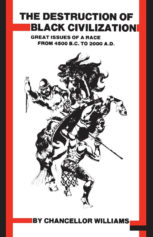In 1991, excavators for a new federal office building in Manhattan unearthed the remains of more than 400 Africans stacked in wooden boxes 16 to 28 feet below street level. The cemetery dated back to the 17th and 18th centuries, and its discovery ignited an effort by many Northerners to uncover the history of the institutional complicity with slavery. The discovery of the slave cemetery began a process through which New Yorkers have begun to learn that slavery was central — not peripheral — to New York’s history. Much of that history is explored in the book, “Slavery in New York” by Ira Berlin and Leslie Harris.
The Slave Population Was Large
For portions of the 17th and 18th centuries, New York City housed the largest urban slave population in mainland North America, with more enslaved people than any other city on the continent. During those years, enslaved Africans composed more than one-quarter of the labor force in the city and perhaps as much as one-half of the workers in many of its outlying districts. Enslaved people could be found in New York into the fifth decade of the 19th century.
Women Were the Face of Slavery in New York City
By their numbers alone, enslaved women — cooking and cleaning for whites, suckling their infants, raising their children and succoring their aged — were ubiquitous in the households of New York’s elite and common among the white families of the middling sort. The men worked outside the house, laboring on the docks and in warehouses, loading and unloading ships and drays — performing the heavy, backbreaking work necessary to keep the New York economy moving.


